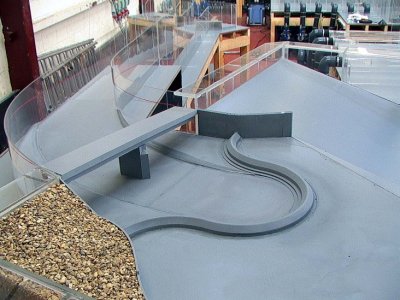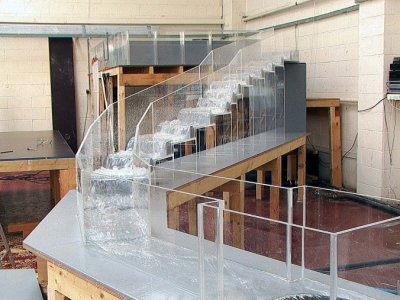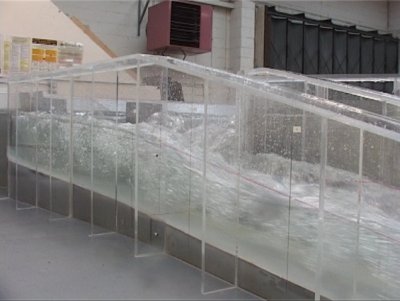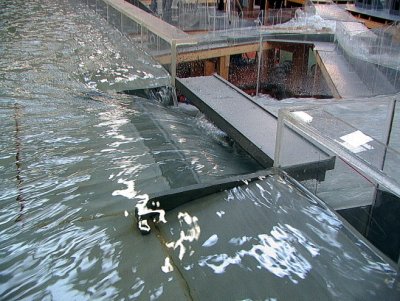Overview
The principle requirement of a physical model study of a reservoir is to define the hydraulic characteristics of the spillway and associated overflow works, i.e. overflow weir, spillway channel and stilling basin. The objective is to define what, if any, modifications are required in order to pass the required design flows within the safe working limits of the overflow arrangement. Common requirements of a reservoir physical model study are provided within this topic area. These should be viewed as typical and not exhaustive. In our experience, testing of overflow arrangements can highlight areas of concern that may not have been envisaged at the onset of the modelling exercise.
Stage discharge curve

Stage discharge defines the rating curve of the overflow weir to pass the design flows; the graphical output can readily define the onset of weir inhibition.
Water profiles

Water profiles provide an assessment of the hydraulic grade line of the overflow weir and associated works; this can be readily plotted from a physical model for ease of reference. The capacity of the overflow channel can be accurately determined and the occurrence and subsequent extent of out channel flow may be derived. Remedial measures can be quickly defined and developed to provide a cost effective solution.
Pressure measurements

The dynamic pressures along an overflow channel can be measured to determine the potential for cavitation and erosion. This can be of particular relevance to existing, masonry, stepped overflow channels.
Energy dissipation

An overflow arrangement must provide effective energy dissipation to ensure potential damage to the receiving spillway, water courses and reservoir embankments does not occur. A physical model can readily assess the effectiveness of energy dissipation and the impact that out of channel flow has on the local topography.







